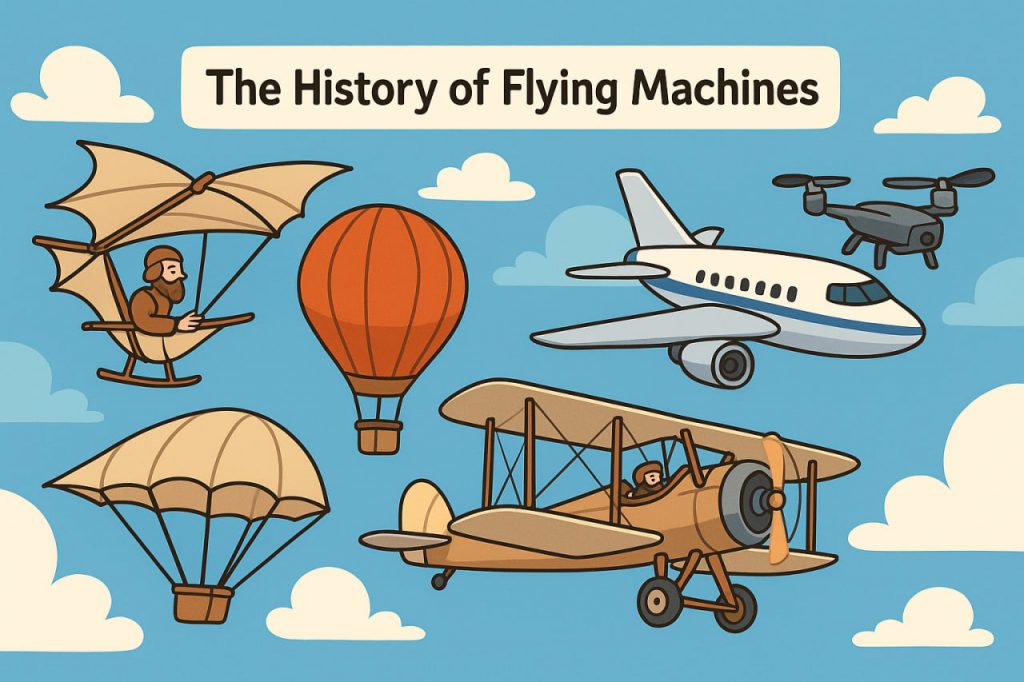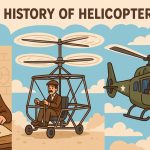The idea of human flight has fascinated people for thousands of years. Ancient myths featured winged gods and flying chariots — from Daedalus and Icarus in Greek mythology to Vimanas in Indian texts. Though purely symbolic or imaginative, these stories reflect a deep human desire to overcome gravity and explore the skies.
Some inventors tried to imitate birds, creating ornithopters — devices with flapping wings. However, without an understanding of aerodynamics, these attempts remained failures until much later.
Renaissance to 19th Century: Vision Turns to Engineering
During the Renaissance, Leonardo da Vinci sketched several concepts of flying machines in the late 1400s. While none of his ideas were built in his lifetime, they showed an early grasp of lift, drag, and wing structure.
By the 18th century, humanity made its first real ascent into the sky with:
- Hot air balloons: The Montgolfier brothers launched the first manned flight in 1783.
- Hydrogen balloons followed soon after, capable of rising higher.
These lighter-than-air craft inspired scientific curiosity and public amazement, but they lacked control and propulsion.
The 19th Century: Gliders and Airships
The 1800s marked a turning point:
- George Cayley built and tested fixed-wing gliders, identifying lift, thrust, drag, and weight as key flight forces.
- Otto Lilienthal made over 2,000 glider flights in the 1890s, earning the title “Father of Aviation.”
Meanwhile, airships (or dirigibles) emerged — elongated balloons with rudders and engines. Count Ferdinand von Zeppelin developed successful rigid airships used for travel and war, particularly in Germany.
The Wright Brothers and Powered Flight
On December 17, 1903, Orville and Wilbur Wright achieved the first controlled, sustained, powered flight in Kitty Hawk, North Carolina. Their aircraft, Flyer I, flew for just 12 seconds — but changed history forever.
Key features included:
- A lightweight gasoline engine
- Propellers for thrust
- A three-axis control system for pitch, roll, and yaw
This breakthrough laid the foundation for modern airplanes.
20th Century: The Age of Aviation
From 1903 onward, aviation advanced rapidly:
- World War I and II accelerated innovation in aircraft design, speed, and combat capabilities.
- The jet engine, developed in the 1930s and deployed in WWII, revolutionized air travel.
- In 1947, Chuck Yeager broke the sound barrier in a rocket-powered plane.
- Commercial aviation took off in the 1950s with aircraft like the Boeing 707, making global travel accessible.
The century ended with supersonic flights (e.g., Concorde), stealth technology, and the rise of unmanned aerial vehicles (UAVs) or drones.
21st Century and the Future
Modern flying machines are more advanced than ever:
- Electric aircraft and hybrid designs promise cleaner air travel.
- Autonomous drones are used for delivery, surveillance, and rescue.
- Flying taxis and vertical take-off and landing (VTOL) vehicles are in development.
- Private space companies like SpaceX and Blue Origin are merging aviation with spaceflight.
From human dreams to hypersonic jets, the history of flying machines is a story of persistence, imagination, and engineering mastery.
Glossary
- Ornithopter — a machine designed to fly by flapping wings.
- Aerodynamics — the science of how air interacts with moving objects.
- Dirigible — a steerable, powered airship.
- Jet engine — an engine that propels an aircraft by expelling fast-moving jets of air or gas.
- VTOL — vertical take-off and landing aircraft.


